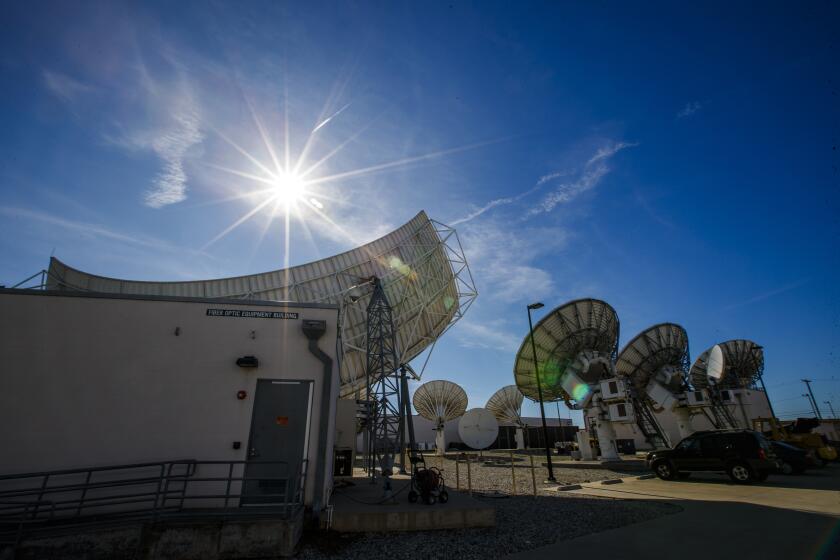Walt Disney’s first love lives on at this historic California ranch
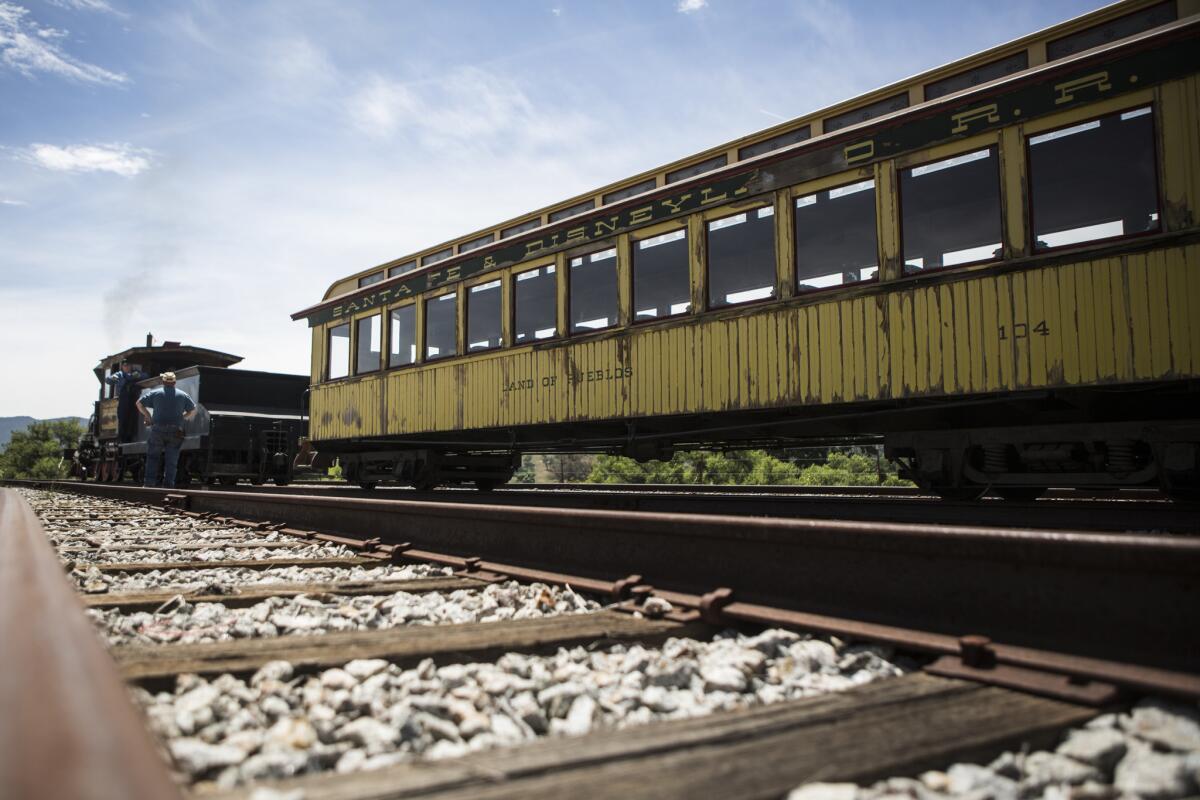
The steam-powered train rounds the bend, passing a rolling meadow dusted with wildflowers and dotted by oak and sycamore trees.
The vintage locomotive is pulling two passenger cars around a two-mile loop at Santa Margarita Ranch in San Luis Obispo County, a roughly 15,000-acre property settled by Franciscan missionaries in 1774.
But these carriages once had a very different home about 250 miles south of here. The passenger cars and two others in the ranch’s inventory were part of Disneyland’s railroad attraction when the theme park debuted in 1955.
After being decommissioned years later, the steel and wooden coaches languished for decades until ranch co-owner Rob Rossi acquired them in 2001 and built the private railroad where they enjoy an anomalous existence far from Anaheim.
Their journey from Orange County to this historic property, which contains a portion of California’s El Camino Real, is a testament to Rossi’s passion for preserving part of Disney’s railroad history — and has earned him acclaim among the state’s devoted community of vintage train enthusiasts.
“I grew up in Ohio — I watched them build Disneyland on television, fell in love with it for sure,” said Rossi, 70, an architect and real estate developer whose family has co-owned the 22-square-mile ranch since 1999. “Little did I ever anticipate that this would come my way.”
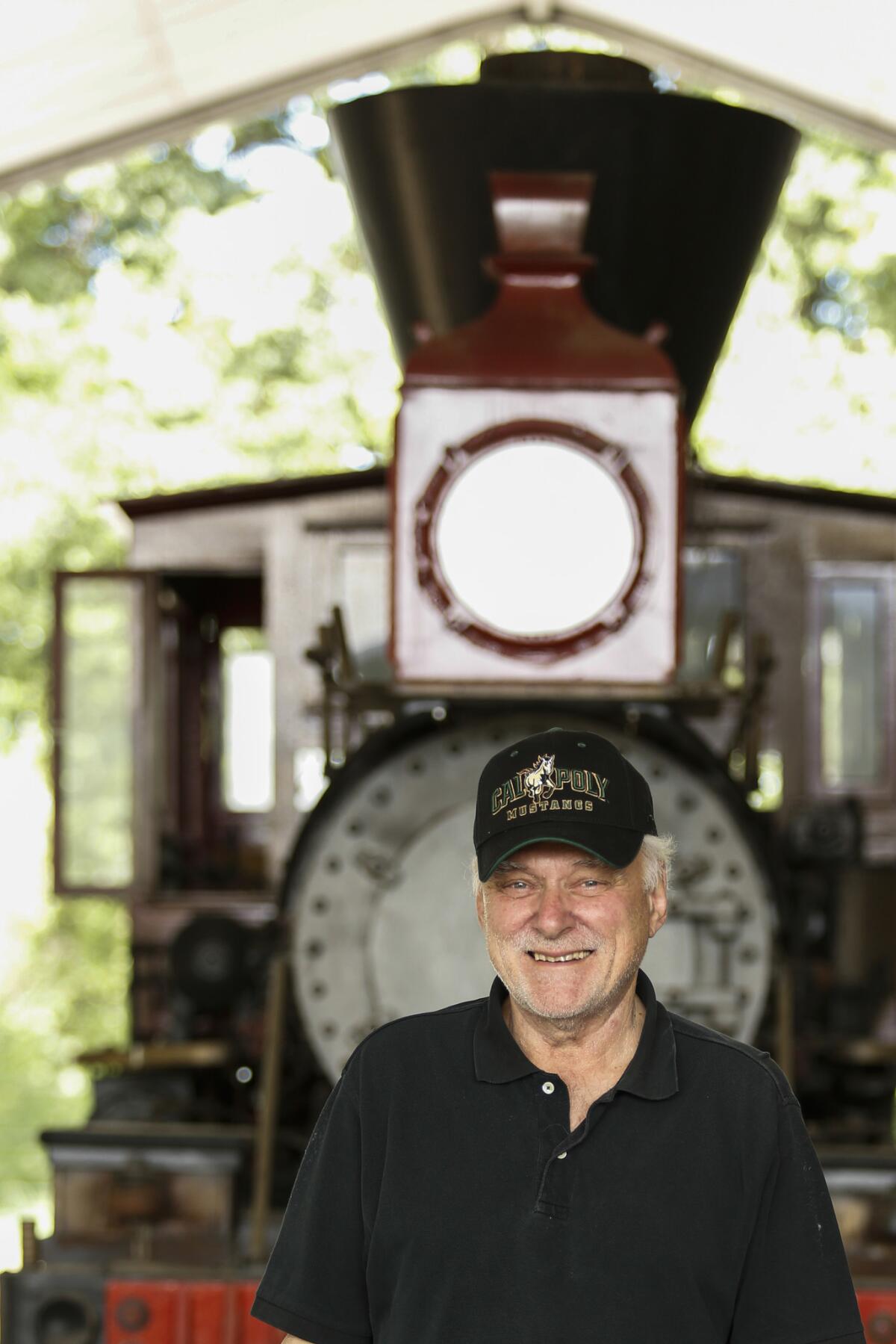
Trains figure prominently in Disney lore. Before Mickey Mouse and Donald Duck, they were young Walt Disney’s first love. Later, they’d become a key part of his amusement empire — all but one of Walt Disney Co.’s resorts has a theme park with an operational railroad.
Although Santa Margarita Ranch is a private, working facility, the public will get a rare chance to see (and ride) the Disneyland coaches when the property hosts the Best of the West antique equipment show over Memorial Day weekend.
But for some train aficionados, access is regularly granted.
On a recent afternoon, Dale Tetley, who is an operating engineer on the Disneyland Railroad, conducted a locomotive on Santa Margarita Ranch’s 3-foot-wide, narrow-gauge track. The steam engine, which dates to 1898, pulled two of the Disney cars.
Later, while the locomotive idled near a 19th century barn built around the remnants of the ranch’s Franciscan-era chapel, Tetley wiped some grime off his gloves and extolled the realism of the ranch and its trains.
“This is fun — it’s bigger than ours,” said Tetley, referring to the engines at Disneyland. “And it’s the real thing.”
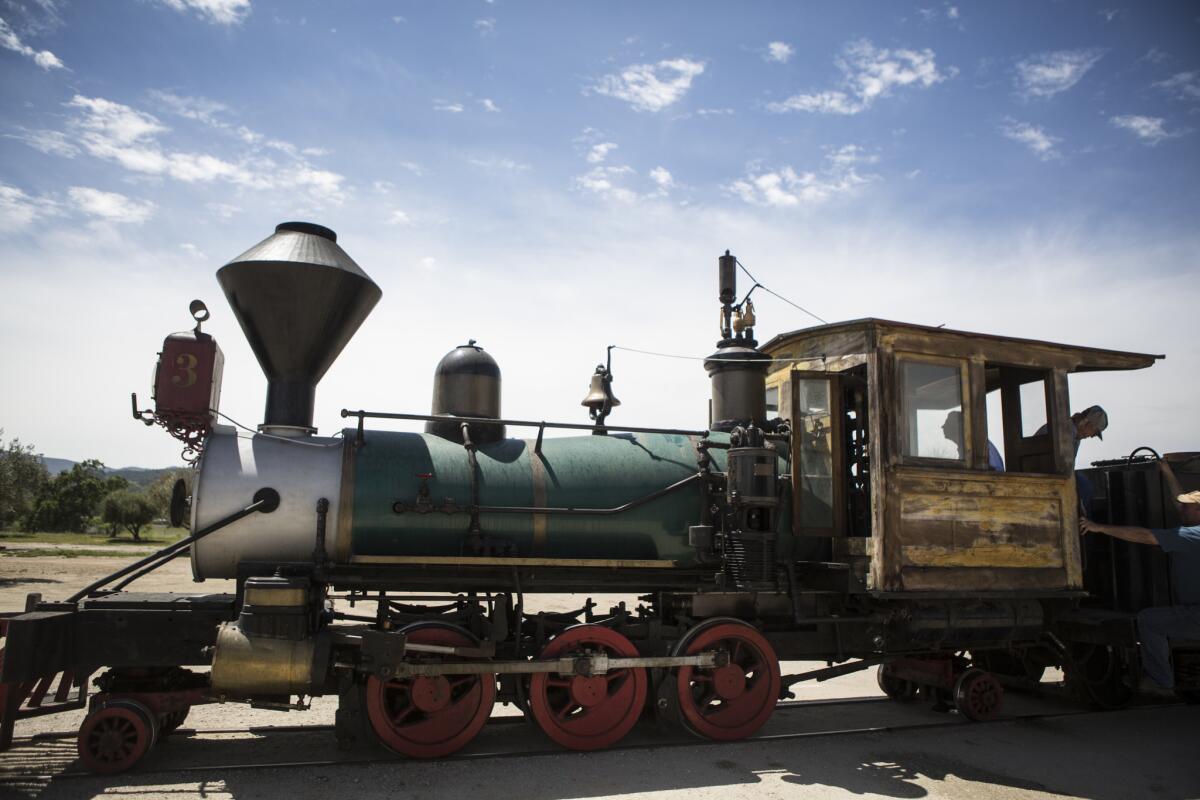
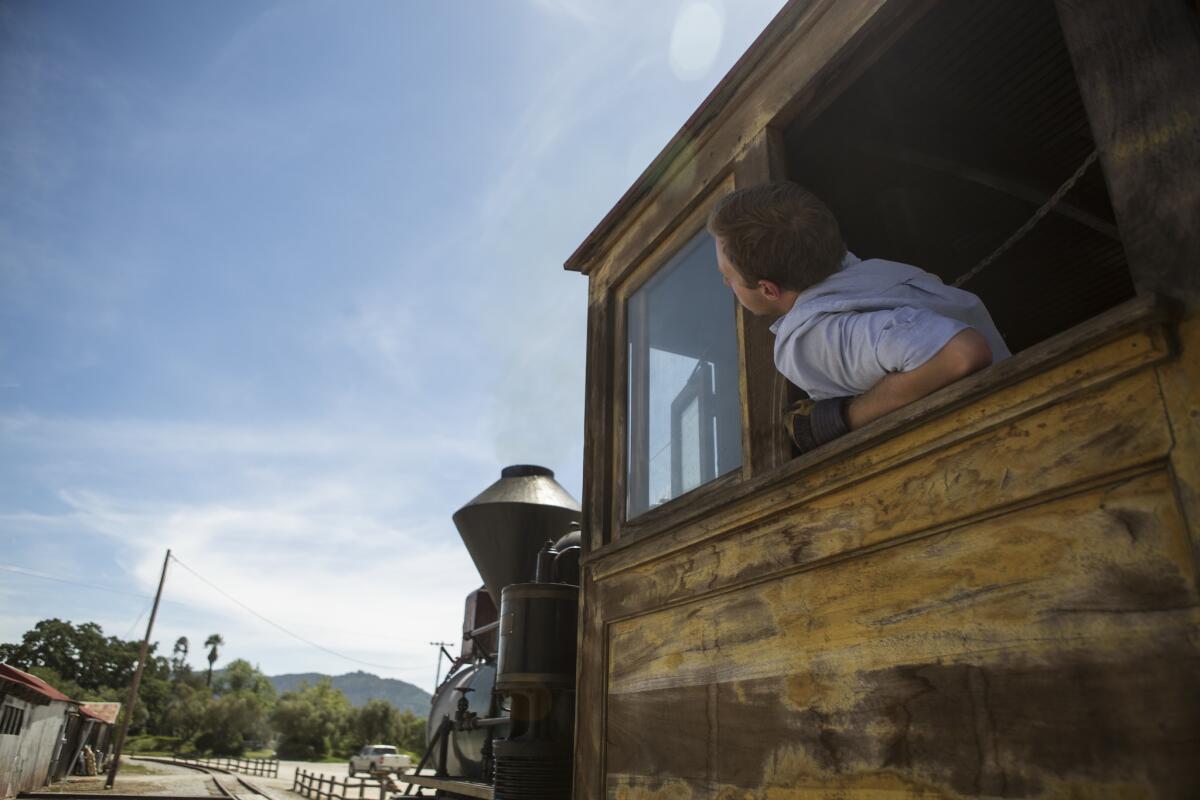
Disney’s train history
Trains played a pivotal role in Walt Disney’s early business forays. As a train-obsessed teenager growing up in Kansas City, Mo., he briefly worked on one in 1916, selling snacks, tobacco and periodicals.
A decade or so later, as a burgeoning animator, he dreamed up the idea for a cartoon mouse while on a train ride from New York to California. That new character, eventually named Mickey, launched an empire.
So ardent was Disney’s love of trains that in 1949 he built a miniature railroad at his estate on Carolwood Drive in Holmby Hills. A few years later, before Disneyland’s opening, he said of the planned park: “I just want it to look like nothing else in the world, and it should be surrounded by a train.”
When it debuted, the Santa Fe & Disneyland Railroad — whose name was the result of a now-defunct branding deal with the Atchison, Topeka and Santa Fe Railway — featured steam engines and cars built and assembled at Walt Disney Studios in Burbank.
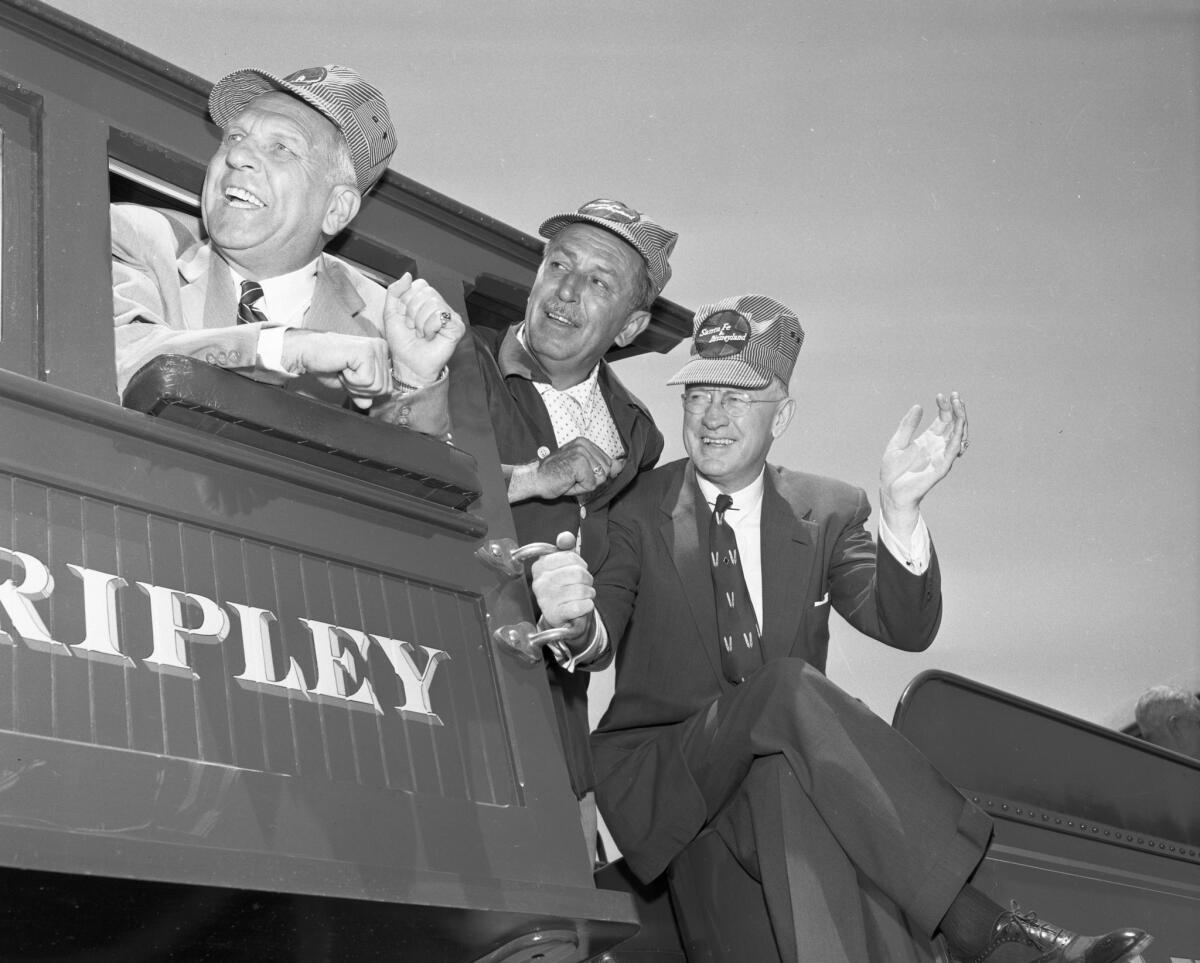
The railroad became a sensation, as passengers swooned over sweeping views of re-created American landscapes and theme park rides. It attracted 2.2 million passengers in 1958 alone, according to “Walt Disney’s Railroad Story,” a book by Disney train expert Michael Broggie.
The railroad, whose locomotives were converted to run on biodiesel in 2007, is still popular. A spokeswoman for Disneyland said it is one of the most frequented attractions at the theme park, and has welcomed hundreds of millions of guests since its debut.
“It is almost a rite of passage as you ride the train,” said Broggie, whose father, Roger Broggie, oversaw the development of the Disneyland railroad.
It is almost a rite of passage as you ride the train.”
— Michael Broggie, author of “Walt Disney’s Railroad Story”
In 2016, the railway, which was eventually renamed the Disneyland Railroad, temporarily closed to accommodate construction of a new “Star Wars”-themed land. While shuttered, the railroad was refurbished and remodeled.
Last summer, train buff John Lasseter, the chief creative officer of Pixar Animation Studios, was on hand for the reopening of the railroad, which offers 27-minute rides around the theme park. For the occasion, Lasseter brought an engine from his private railway in Glen Ellen, Calif., once owned by the late Disney animator Oliver “Ollie” Johnston.
Lasseter, who has since taken a leave from Disney amid claims of inappropriate workplace behavior, engineered the locomotive on a ceremonial ride.
“When you ride on the Disneyland railroad, you are in direct connection with Walt Disney himself,” Lasseter said at the time.
Lasster once brought the Johnston engine to Santa Margarita Ranch for a ride there, too.
On the ranch
Riding a steam-powered train is a visceral experience — especially from the open cab of the Pacific Coast Railroad’s 120-year-old locomotive. Churning pistons generate rhythmic vibrations, a belching smokestack expels eye-watering exhaust, and a blasting whistle — tooted often by an eager engineer — rattles the ear.
It’s a little surreal to see train cars marked “Disneyland” far from the ersatz landscapes of the carefully managed theme park. The Disney cars, each of which can accommodate 40 people, are built to five-eighths scale but seem full-size in person. The use of scale in the cars’ construction — and in other elements built for Disneyland, such as the Mark Twain Riverboat — is just one example of Walt Disney’s trademark ingenuity that Rossi appreciates.
“[Disney] was a genius — I mean, he was a literal genius,” Rossi said. “I think he understood human nature, and boy, he loved railroads. That’s probably the common denominator for me.”
Several company experts said they doubted Disney would part with the train cars these days, given how fiercely it guards its intellectual property.
“It is an anomaly that it is even in private hands,” Rossi said.
But times were simpler when the late rail collector Bill Norred acquired them from Disney in the mid-1990s.
“They had no more use for them — those passenger cars were sitting in the back of the roundhouse for decades, just gathering dust,” former Disney chief archivist Dave Smith said.
The carriages were phased out in the mid-1960s, partly because their narrow doorways made loading and unloading throngs of riders inefficient. Another problem, Smith said, was that “the enclosed passenger cars didn’t give people a good view of the park.”
The cars were finally decommissioned in 1974, and seemingly forgotten. (An observation coach was spared and refurbished to accommodate VIP guests; it is still in use at Disneyland.)
Norred, a former owner of the Sportsmen's Lodge hotel in Studio City, acquired the cars by trading Disney a vintage steam locomotive that was later displayed at Walt Disney World Resort in Orlando, Fla.
“This was a pretty unique deal back in the 1990s,” said Larry Boone, vice president of the Carolwood Foundation. The nonprofit maintains some of Walt Disney’s train artifacts, including the barn that housed his home railroad workshop, at Griffith Park’s Los Angeles Live Steamers Railroad Museum. “[Disney] thought it would be a good trade; it doesn’t make sense for them to store these things for decades.”
After Norred died in 1998, Rossi, who had been friends with the collector, was given the chance to purchase four of the five Disney cars Norred owned. Rossi said he paid “hundreds of thousands” of dollars for them and other equipment. A fifth original Disney car was later sold by the family to the Carolwood Foundation, which displays it at Griffith Park.
Santa Margarita Ranch has its own railroad history: In the late 1800s, its owner granted the Southern Pacific Railroad a right-of-way through the property, which brought the railway to the area and led to the founding of the town of Santa Margarita in 1889.
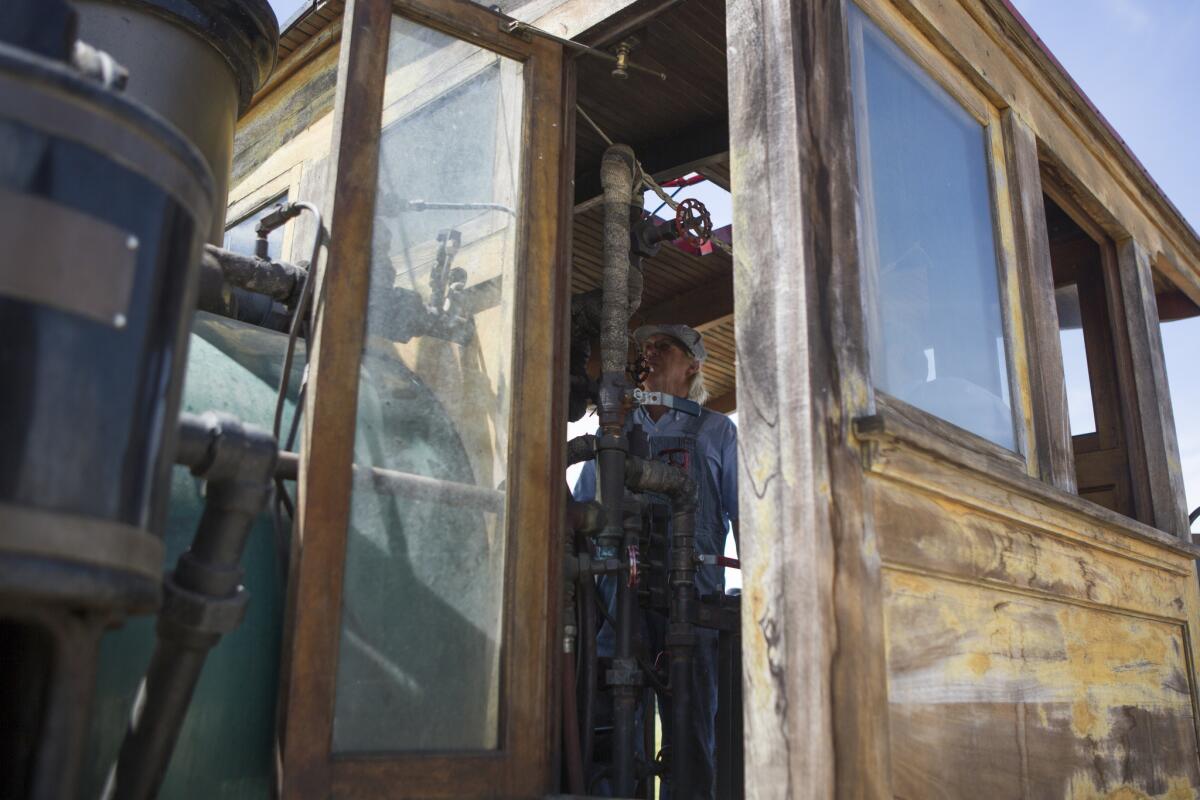
Rossi began running the Disney cars in 2004. Along the way, the operation has attracted notables besides Lasseter, among them then-Gov. Arnold Schwarzenegger and the late actor David Carradine, who staged a train heist on the passenger coaches as part of a charity event.
So far, Rossi has restored one of the Disney carriages, which is named Painted Desert, at a cost of more than $100,000. He plans to eventually tackle the other three: Land of Pueblos, Colorado Rockies and Navajo Chief. Rossi hopes his passion project will help preserve a slice of American history and afford younger generations the opportunity to connect with both trains and life in bygone eras.
“We aren’t doing it to derive a profit,” he said. “We think it is a great draw for children to show them what life was like in the 1800s.”
The future
Rossi has an expansive vision for the ranch — and its trains.
He plans to build an on-site hangar where the unrestored Disney train cars can be refurbished, limiting down time. He also wants to restore other rolling stock he has acquired, including a locomotive that was used during the filming of the television program “Dr. Quinn, Medicine Woman.”
There are also plans to build a museum that would tell the history of the ranch, which in the late 1700s provided food for the nearby Spanish missions.
Surveying the ranch, where livestock is raised and wine is made, Rossi turned reflective as he considered his many plans. Nearby the locomotive pulling the two Disney cars emitted a series of lazy mechanical sighs as its boiler bubbled.
“This is a railroad,” Rossi said emphatically. “Disneyland is wonderful, but it’s an amusement park. We don’t do things for amusement.”
A smile crept across his face.
“Well, some would argue we do.”
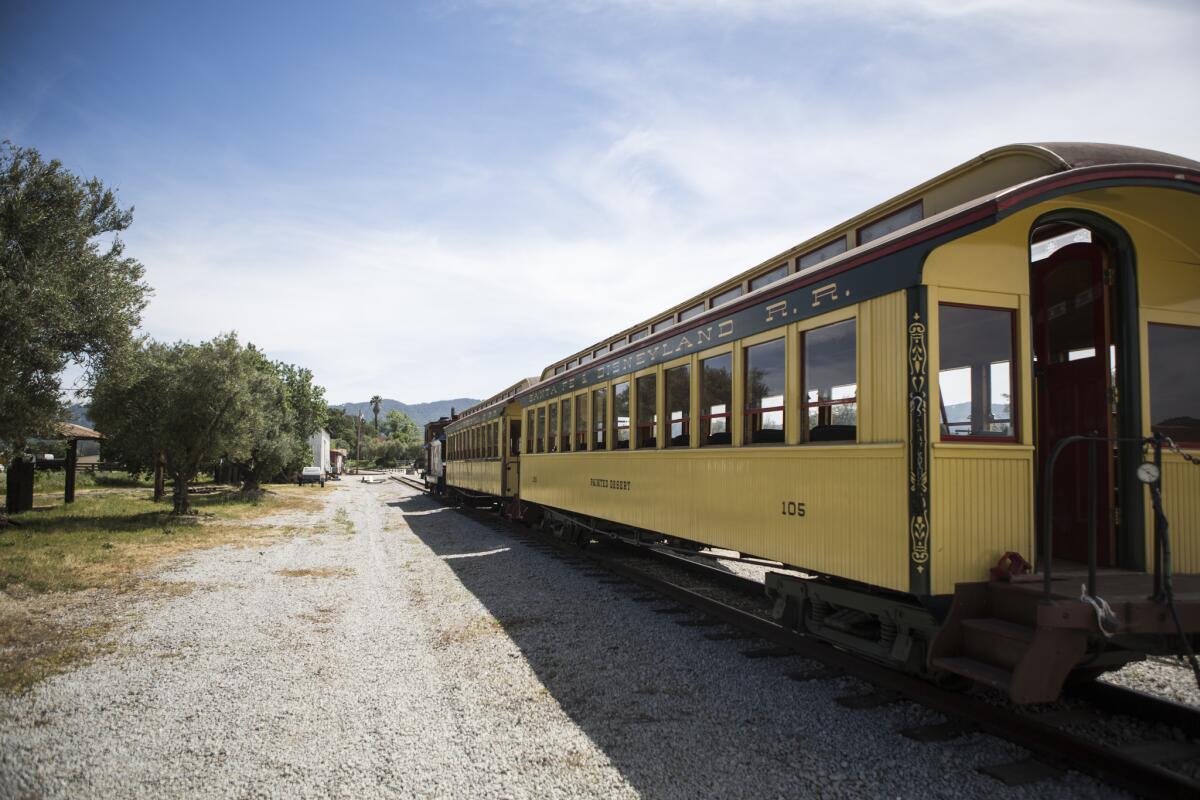
Inside the business of entertainment
The Wide Shot brings you news, analysis and insights on everything from streaming wars to production — and what it all means for the future.
You may occasionally receive promotional content from the Los Angeles Times.



